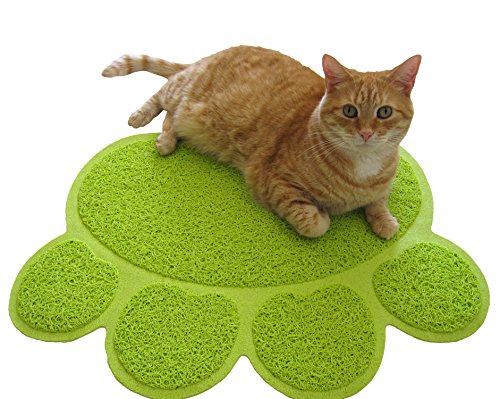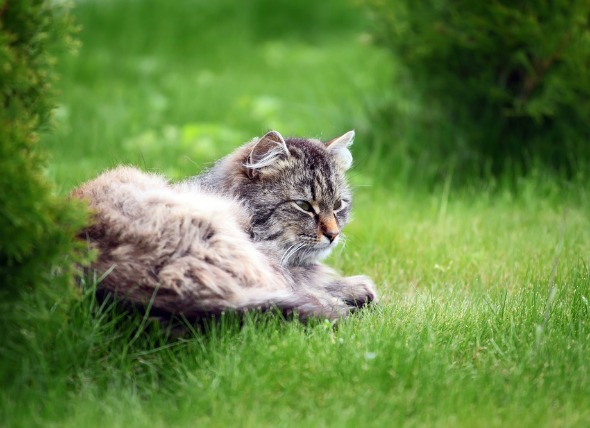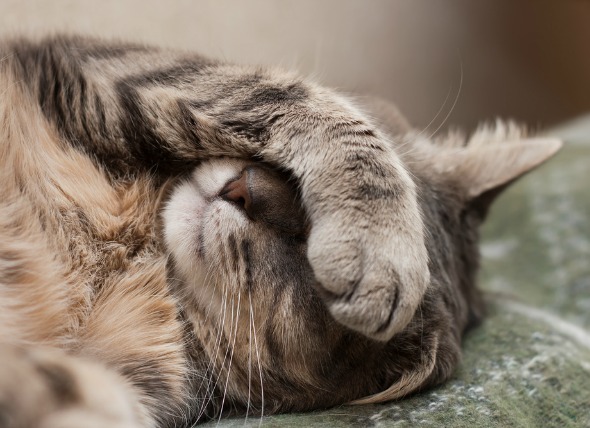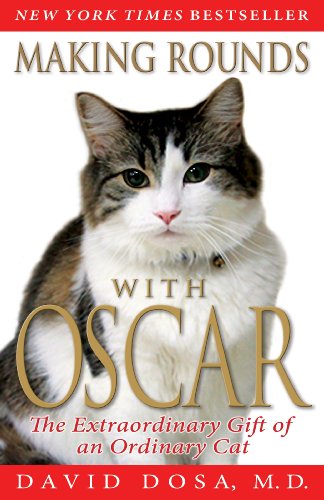
In recent years new breeds of cats have been developed. Ragdolls and Ragamuffins are two examples of relatively new types of cats. One such breed of feline that was developed about 30 years ago is the Pixie-Bob.
In the 1980s a cat with multiple toes and a bobbed tail was bred with another that had similar characteristics. The male parent was believed to be a bobcat. The result was a new breed that was given the funny name of Pixie-bob. I actually think these felines suit that rather odd name.
If you went out for a walk and happened to come across one of these felines, you might be nervous or scared. However, there would be no reason for concern. This cat might look intimidating, but it is harmless. These are friendly, domesticated cats who make good pets.
If you are considering adopting a Pixie-bob or would just like to know more about these pets, here is some information about their characteristics and how to care for them.

As you can see from the image above, these cats resemble a mini bobcat. They have similar markings on their coat. Some may not have tails at all. Others may have tails that are only an inch or two long.
However, their natures are entirely different from bobcats. Pixie-bobs are not aggressive. In fact they enjoy people and will bond with every member of the family.
Pixie-b0b cats have some traits that are similar to dogs. For example, they love to go for walks and will allow you to put them on a leash. This isn't easy to do with most other domestic felines.
These pets thoroughly enjoy the outdoors and like to wander. A leash is a good idea for their own safety. They tend to be quite curious about the world around them.
A Pixie-bob cat tends to be somewhat larger than most other breeds when they are fully grown. The average weight is about 12 pounds but some are bigger than that. Of course the males are almost always larger than the females.
Unlike some felines, Pixie-bobs are not afraid of water. In fact, they are usually fascinated with it and may jump onto the kitchen counter when water is running.
These cats are good with children. They are a fun pet for kids due to their playful nature. It is normal for the cat to be quite active. The pet will get bored without stimulation, so be prepared to have a lot of toys to keep them busy. These cats love to play with anyone, and might even learn to fetch a ball. Seriously! These are not typical cats in many ways. A Pixie-bob is more like a dog in a cat's body.
Another unique characteristic these cats have is how they vocalize. Most cats meow to get attention or if they are want something. A Pixie-bob makes sounds that resemble a chirp. You might not hear the pet meow at all. So if you don't like excessive meowing but love cats, you will probably enjoy having this breed around. The noise they typically make is unusual but not particularly annoying.
Pixie-bobs are a very smart animal. They are much more intelligent than most other breeds of cats. You can teach them to understand quite a few words and even some phrases, which is another similarity they have with dogs.
Most of these cats have extra toes. Domestic cats usually have 18, but Pixie-bobs often have over twenty. This is known as polydactylism. It is an unusual trait, but harmless. The skin and fur on the bottom of each paw is always black in color.
The claws grow quickly and will need trimming on a regular basis. It may be necessary to cut them every couple of weeks.

Trimming is important for cats as they might otherwise inadvertently scratch someone. Of course, the sharp claws are not good for the furniture, as many cat owners have discovered.
It is very important that you avoid cutting the pink part of the nail, as this is where blood vessels and nerves are located. Cutting this area will cause pain and bleeding. I have a mobile pet groomer who does my cat's nails but many people do this themselves. If the cat is young, he or she will get quite used to the procedure.
Most Pixie-bobs have short hair. This makes grooming quite easy. The pet will enjoy being brushed, and will not shed as much as some breeds do. Grooming is low maintenance as a rule, which is in contrast to regularly needing the claws trimmed. There are a few exceptions, as some have longer hair, but most do not.
Pixie-bobs are usually healthy and are no more likely to develop serious health problems than any other type of cat. They do not usually require any more medical attention than other breeds.
I recommend feeding a high quality diet of food you can obtain from a pet store or veterinarian. Most brands of cat food sold in grocery stores are not nutritious. They contain fillers, artificial ingredients and other potentially harmful ingredients. Cats need to eat a healthy diet, just like we do. Felines usually like store bought food because of the artificial ingredients. I compare the grocery store bought food to buying candy. It might taste good to the pet, but usually is not a good choice for their long term well being.
In conclusion, a Pixie-bob cat is a great choice for if you are thinking of getting a pet. Children love these cats, although they will get along with people of any age. They generally stay healthy and live a long life, so you shouldn't have to take them to the vet often, except of course for regular care that every animal needs.
Since they thrive on activity, this breed might not be suitable for an elderly person. A better choice for a senior would be a Ragdoll. A Ragdoll is a very docile cat that is equally lovable and friendly, but isn't nearly as active.

 Understanding White Cat Breeds
There is something sophistic
Understanding White Cat Breeds
There is something sophistic
 Fainting in Cats
Syncope in Cats
Syncope is a medical condition th
Fainting in Cats
Syncope in Cats
Syncope is a medical condition th
 Collection of Fluid in the Lungs (Not Due to Heart Disease) in Cats
Noncardiogenic Pulmonary Edema in Cats
Noncardiog
Collection of Fluid in the Lungs (Not Due to Heart Disease) in Cats
Noncardiogenic Pulmonary Edema in Cats
Noncardiog
 Vomiting of Blood in Cats
Hematemesis in Cats
Hematemesis, or the vomiting
Vomiting of Blood in Cats
Hematemesis in Cats
Hematemesis, or the vomiting
 Can Cats Heal An Injury or Cure Illness?
A Cat Gives More Than it Receives &
Can Cats Heal An Injury or Cure Illness?
A Cat Gives More Than it Receives &
Copyright © 2005-2016 Pet Information All Rights Reserved
Contact us: www162date@outlook.com